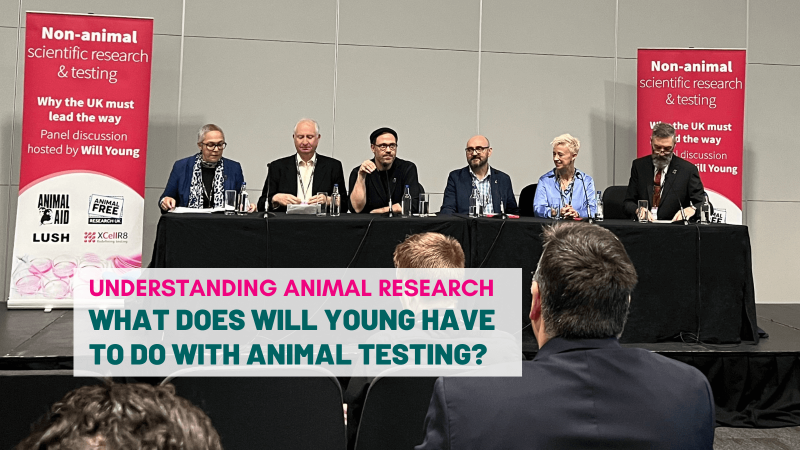
There has been wide reporting on a new study published in PLOS BIOLOGY that seems to contain a lot of old information.
Swiss and UK researchers found that “just 5% of drugs” that had been tested on animals made it to the pharmacy shelf, concluding that many animal studies were not well designed, and therefore a sharper focus on the quality and relevance of animal studies is needed.
These headline statements are, of course, more than enough for some people to go off the deep end, declaring that animal experiments are useless and should immediately be replaced with non-animal methods. But a dig into the detail of the report paints a different picture.
Looking at the bigger picture
The headline figure of 5% refers only to drugs that win final regulatory approval. But the study also looked at progression from pre-clinical tests in animals to human clinical trials. Here the numbers look very different. The researchers were surprised to find that, despite their misgivings around study design, their meta-analysis showed that “86% of positive results in animal studies were translated into positive results in subsequent human trials” and concluded that “contrary to widespread assertions, the rate of successful animal-to-human translation may be higher than previously reported.”
Actually, that’s more or less exactly what we would have expected them to find. An analysis undertaken by the IQ Consortium of pharma companies in 2017 also found that animals predicted human safety … 86% of the time.
Why is there such a big discrepancy?
But why the discrepancy between the very high rate of translation from animal studies to positive results in humans and the low number of drugs receiving regulatory approval? The authors of the new study pin it on one of two things: either the requirements for randomised controlled clinical trials are excessively strict, causing some potentially promising candidate drugs to fail unnecessarily, or there are limitations in the design of both animal experiments and human trials.
The authors lean towards the latter, concluding that researchers need to ensure that studies are well-designed, use appropriate animal models, and measure outcomes that matter to patients. But what are the limitations in the design of animal studies? They identify five factors:
1. Most animal studies did not include blinding, where the investigator does not know which animal received each treatment, or randomisation of animals to treatments.
2. Many studies involved too few animals to provide reliable, statistically significant evidence of whether the treatment was successful.
3. Animal studies often involve young, healthy animals, while human patients may have multiple health conditions and be older.
4. Animal studies often focus on how a drug works on a molecular level, while human studies prioritise the drug’s overall effectiveness.
5. The outcomes measured in animal studies might not always reflect the most important clinical outcomes for patients.
The importance of experimental design
None of this will come as a surprise to the UK life science sector. In fact, the NC3Rs has developed a tool to help researchers design better studies, including proper blinding and randomisation and ensuring that they are not statistically underpowered by using too few animals, because underpowering is a misapplication of the principle of reduction that is one of the 3Rs.
Some of the problems are more difficult to address, however, and may be unavoidable. The youth of the animals and the lack of secondary health concerns are probably inescapable features of these models. It is not certain that engineering secondary health issues in lab animals would improve translation and the complexity of such studies would soon spiral out of control. Animal studies can’t do everything, we test human drugs on humans for a reason. An inherent weakness of this sort of study is the “letterbox” view it takes of a long and complex process, bringing one part into focus while ignoring the broader picture.
This puts the focus back on what’s required for regulatory approval i.e. drugs which might have many effects being licenced for one specific effect. After all, Viagra was a not-particularly-effective drug for high blood pressure once upon a time…
Animal tests aren't a catch all
Reasons 3 and 4 hint at the fact the animal is being used to model fewer aspects of a drug’s effect than the human study, so why would it translate exactly? If you take your car for its annual checkup, they don’t measure the vehicle’s top speed – that’s a different test, and I’m not sure it should replace the ones where they test the state of your headlights and tyre tread.
Animal studies precede human trials and are designed to support them in different ways, like looking at how a drug behaves on a molecular level or predicting first-in-man (stage 1) safety, which they do about 86% of the time. They are not expected to predict every aspect of a drug’s behaviour.
Even when the translation from animals to humans is clearest, such as in safety testing, the results don’t fit into a simple binary of safe or dangerous, but into a confidence interval. In other words, a drug could be deemed “safe enough to try” in humans but could have known toxicities that could maybe be managed, maybe not. Some 30% of drugs fail for safety reasons, but that means 70% don’t.
Animals perform one small part of a much longer process. They do their niche bit very well provided experiments are well designed. This is not news. The “translation gap” is not inexplicable. Inherent to much of the scrutiny of animal models is the idea that other approaches fare better, but they don’t. How do we know? Simple: they constitute most of the current drug development process.
Drug development starts with proteins or cells, organic chemistry and other non-animal methods. Candidate compounds advance through dozens of tests and investigations of increasing complexity, some of which might be animal models. A fruit fly may be used at some point, followed by more non-animal studies which may lead into an experiment involving mice, and so on. Most research – between 70 and 80% – doesn’t involve a live animal.
Solving the “mystery” of the translation gap
This new paper, then, could be offered as evidence to support or undermine animal models, but either would be cherry picking. Much better is to add the missing context to solve the “mystery” of the translation gap.
What the new paper, and its associated press coverage, does remind us of is that good study design is of the utmost importance. The public does not support badly designed studies that risk wasting animal lives with poor outcomes. But good design can, and often does, mean using more animals – as blinds and to sufficiently power the study.
The authors’ surprise at the unsurprising is perhaps an unwitting further finding of the paper – that letterbox views of a much wider process are great for headlines but a recipe for personal confusion.
Last edited: 9 September 2025 11:34






